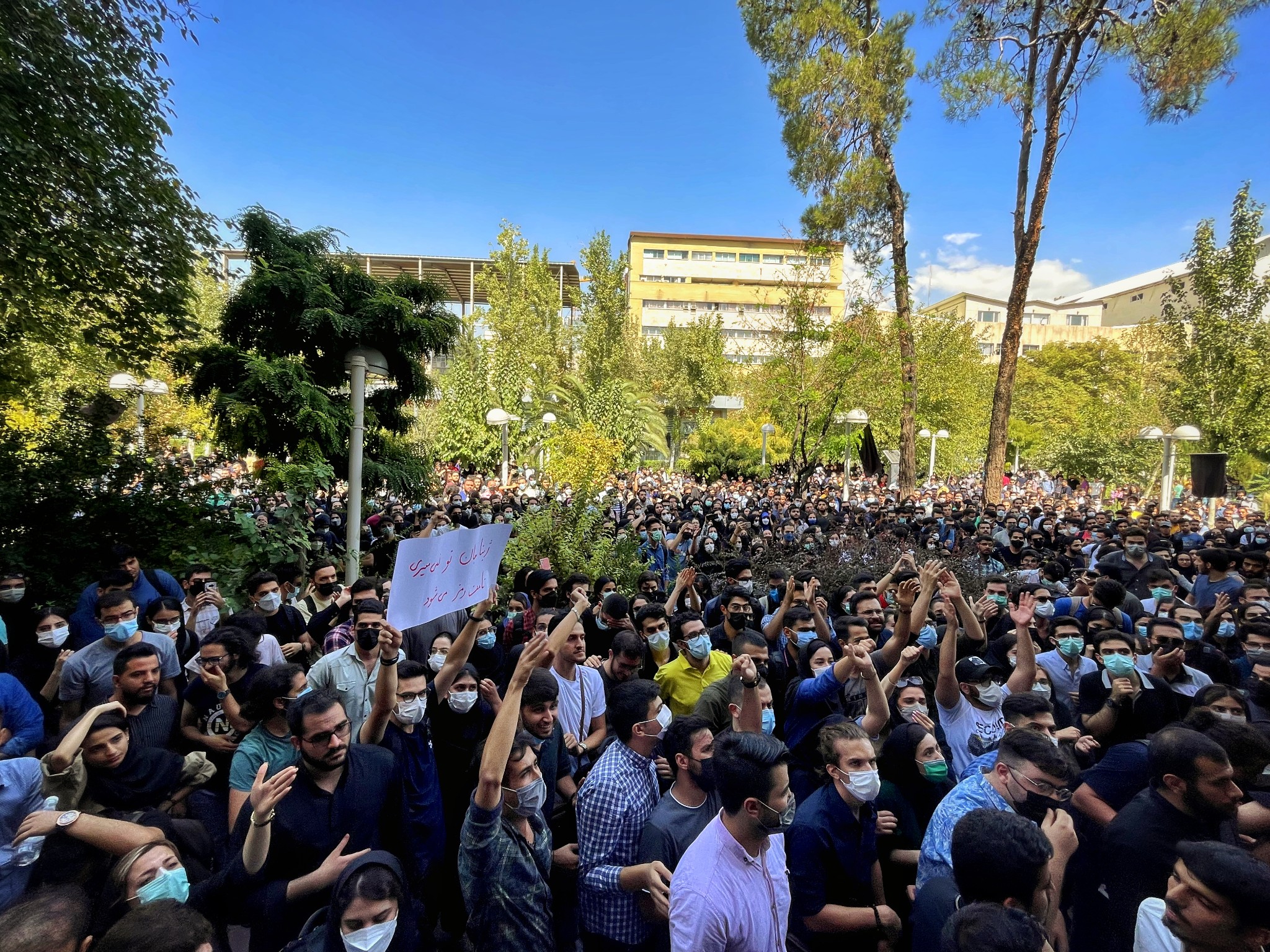 Iranian university students protesting in September 2022. Image credit: Darafsh via Wikimedia Commons (CC BY-SA 4.0)
Iranian university students protesting in September 2022. Image credit: Darafsh via Wikimedia Commons (CC BY-SA 4.0)
The Iranian Protest Movement: Different or Doomed to Failure?
This past weekend’s confusing reports that Iran may have disbanded its “morality police” comes amidst an inadequate picture of the protest movement in Iran. Though this reporting appears to have jumped the gun, it may indicate some cracks forming within the Iranian government, or a lack of coordination. This goes to highlight the relatively poor picture we have on the strength of the protests, partly due to strictly curtailed internet service and an inability of foreign reporters to access Iran. The Iranian protestors who have for months stood bravely in opposition to the regime responsible for the murder of Mahsa Amini are deserving of our utmost respect, particularly as they have continued to protest despite the continuous and unrelenting danger posed to them. Meanwhile, the reporting and opining we have seen on this movement has repeatedly emphasized why it is different from those that preceded it. Particularly, this movement, despite being described by many as leaderless, is also seen as being broadly led by young women and unprecedented in unity across sectors of society.
Yet despite the bravery and determination of the protestors, this movement is likely doomed to the same fate as all the others that have preceded it following the 1979 Revolution. The primary reason for this is exceedingly simple: it’s not yet big enough. To guarantee success, the Iranian protest movement would require the active participation of about 3.5% of its population and require sustained rather than sporadic demonstration. In a country of 85 million people, that means nearly 3 million would have to be out on the streets. What we’ve seen so far doesn’t appear to remotely approach that. Nor is it clear that even 3 million people would be sufficient, particularly without a clearly stated list of demands or a clearly proposed alternative. In contrast, the largest protests in Iran since the ’79 Revolution were seen in the Green Revolution of 2009, which managed to see and estimated 2-3 million people protesting in the streets of Tehran—possibly reaching that 3.5% level for a brief period—but failing to achieve any lasting result.
That is not to say that this Iranian protest movement cannot grow to that size, as the longevity of these protests is impressive. There are several scenarios by which it could reach an adequate size to make a difference:
- The continued brutality of the regime against protesters inspires increasing numbers of people to oppose it. An atrocity or series of atrocities committed by the Iranian government angers the population enough to overcome their individual fear.
- The ability of the protest movement to survive and continue demonstrations draws enough people off the sidelines to stand in support.
- A spontaneous event occurs that for any variety of reasons draws people out into the streets.
- A single demonstration in a major city reaches a size large enough to draw enough people off the sidelines as there is individual safety in numbers.
- Security forces decide to break with the regime, which would significantly change the outlook.
Assuming it does reach a sufficient size to affect change within the country, in addition to a list of demands and alternative model for the country, the movement will need a transition plan, which is difficult to form without identifiable leadership. The movement will also need to maintain a near constant presence, which the 2009 Green Movement was unable to achieve as time went on. As the Critical Threats Project has reported, the current protest movement has failed to materialize significant demonstrations on multiple occasions. Even if the protest movement is only able to come out en masse at scheduled times, it allows the Iranian government the time to both prepare and work on stamping out the protests while it simply runs out the clock for those protests to end. It becomes a manageable problem. Though the turnout in the streets may not be strong enough, there are signs that support for the movement is fairly widespread, as demonstrated by the active mass strikes taking place across the country.
The Iranian regime, while failing to completely stamp out this movement, may not have to, so long as it can repress public participation in a fashion that deters or inhibits organization and prevents it from reaching critical mass. In past protests, the Iranian government has responded in force, and with precision. So far in these protests, the regime has killed over 450 people, and arrested more than 15,000.
The leaderless nature of the current protests could turn out to be a curse or blessing. Leadership is often important in protest movements, providing form and structure and an identifiable alternative around which the protest can coalesce. But as both the Iranian regime and Putin’s Russia has demonstrated in the past, leadership also provides a convenient target to attack, and the relative ease by which the regime is able to eliminate individuals who pose a threat can prove demoralizing for the protesters organized around those leaders. In this sense, the protest movement may actually benefit from its amorphous and diffuse nature, as it makes it more difficult for Iranian authorities to break it through targeted arrests or killings. But without leadership and direction, it’s unclear how the protest movement grows significantly beyond merely existing, even if that’s an impressive achievement all on its own.
Image license under Creative Commons (CC By-SA 4.0)





